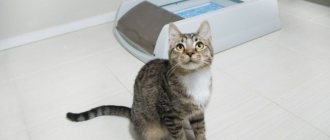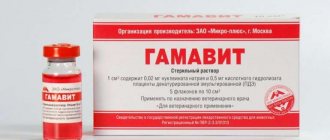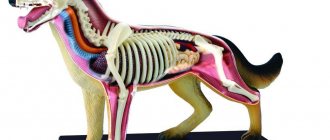4737Pavel
Often, owners of domestic cats associate the word parasite with helminths. In fact, protozoa can cause more serious harm to a cat’s health. The symptoms and treatment of protozoa in cats have been well studied, and we will talk about this today in this article.
Protozoa in cats are represented by unicellular and colonial organisms that lead a parasitic lifestyle in the animal’s body. These protozoa cause diseases that have another name - protozoal infections. The most common of them:
- amoebic dysentery or amoebiasis;
- toxoplasmosis;
- trematodes;
- isosporosis;
- coccidiosis;
- Giardiasis, better known as giardiasis.
© shutterstock
How does protozoa infection occur?
A cat can become infected after eating food or water contaminated with parasite spores. Another route of transmission is the bites of blood-sucking insects. At risk are kittens that still have weak immunity and animals that have recently undergone illness or surgery; they also still have weak immunity. Protozoa in cats are also dangerous for humans. Therefore, when treating pets for protozoa and disinfecting the premises, certain safety rules must be followed. This is especially important if there are children or elderly people in the house. In this case, the sick animal will need to be isolated.
Prevention of protozoa
- Promptly remove feces, disinfect animal care items, and maintain cleanliness in the premises.
- Isolation from stray dogs and cats.
- Do not feed raw meat and offal.
- Avoid eating rodents (in house keeping, a bell on the collar when kept outdoors).
Amoebic dysentery
The amoeba Entamoeba histolytica, entering the cat's body, causes disease. The main symptom is prolonged diarrhea. As a result, inflammation of the colon occurs. People, dogs, cats and some other animals are at risk. Often, a person can be a source of protozoan infection for his pets, even if he himself is not sick, but is only a carrier of these protozoa.
The localization zone of this parasite is the large intestine; in some cases, the disease can be asymptomatic when it enters the chronic stage or with pronounced diarrhea. In the absence of treatment and with incorrectly selected therapy, the cat quickly loses appetite and weight. Stool samples are taken for diagnosis, and antibiotics are often prescribed for treatment.
© shutterstock
Treatment of protozoa
Antiparasitic agents
- Chemical coccide. Effective against any protozoosis. Give orally with food at a dose of 24 mg/kg for 3 days. If necessary, three-day courses are repeated with an interval of 10 days, and for toxoplasmosis, after a 3-day course, they continue to give a dose of 12 mg/kg for another 25 days to prevent re-infection.
- Toltrazuline: drugs Baycox or Stop-coccid. Baycox 5% is given to adult animals at a dose of 10-30 mg/kg for 3 days, which corresponds to 0.2-0.6 ml per 1 kg of weight. Stop-coccid for young animals is recommended at a dose of 10 mg/kg, or 0.2 ml per 1 kg of weight, for 3 days in a row.
Symptomatic therapy
In addition to combating the causative agent of the disease (protozoa), it is necessary to eliminate dehydration and nutritional deficiencies in the body.
- Subcutaneous or intravenous injections of solutions are used: Ringer's, 5% glucose, Refortan, Reamberin.
- In case of severe exhaustion, solutions for parenteral nutrition containing amino acids are indicated - Infezol, Duphalight. Use multivitamins (Hemobalance).
- Astringents and enveloping agents are prescribed internally - flax seed decoction, rice decoction.
- In case of severe damage to the mucous membrane of the digestive tract, sorbents are used - Phosphalugel, Enterosgel, Polypefan.
- If the doctor suspects that a pathogenic microflora caused by damage to the intestinal mucosa has joined the protozoa, an antibiotic or metronidazole (Trichopol) is prescribed.
Diet
- If the cat has previously eaten a commercial diet, special diets are used to maintain the functioning of the gastrointestinal tract: Hill's i/d; Royal Canin GastroIntestinal and others.
- If you are used to homemade food, use liquid slimy rice porridge with boiled beef and fermented milk products.
Feed should be easily digestible and not irritate the digestive tract.
Trematodes
The localization of these protozoa can be in the intestines, liver or pancreas. The route of entry is through an intermediate host, which can be mice, other types of rodents, frogs, which cats like to hunt. Protozoa are usually found in a cat’s feces when it is submitted for diagnosis. The main symptoms include
- nausea;
- vomit;
- loss of appetite;
- weight loss;
- diarrhea;
- lethargic state;
- development of enteritis.
Symptoms of the disease
A dangerous disease is caused by a microorganism that penetrates directly into the gastrointestinal tract. There are two types of parasites that cause isosporosis - felis and isspora rivolta. In the gastrointestinal tract, dangerous microorganisms undergo two stages of reproduction - asexual and sexual (schizogony and gametogony).
Once ingested by an adult in the form of an oocyst, they cause only minor symptoms of infection. This may be weakness, vomiting. Sometimes the symptoms are not expressed at all. But for a kitten this parasite is a real danger. Not only does the small animal suffer from severe symptoms, but it usually eventually dies.
Who is most susceptible to isosporosis disease? These are kittens under the age of six months, as well as adults, but they have very weak immunity. Particular attention should be paid to representatives of those breeds that initially do not have a strong immune system and resistance to disease.
When diagnosing the disease, instead of “isosporosis” the synonyms “istoisosporosis” and “coccidiosis” can be used.
Who is most susceptible to isosporosis disease? These are kittens under the age of six months, as well as adults, but they have very weak immunity. Particular attention should be paid to representatives of those breeds that initially do not have a strong immune system and resistance to disease.
When diagnosing the disease, instead of “isosporosis” the synonyms “istoisosporosis” and “coccidiosis” can be used.
Protozoa provoke a state of lethargy in the animal.
- weight loss;
- diarrhea, sometimes with blood clots and mucus;
- vomit;
- dehydration;
- poor appetite;
- dull coat;
- lethargy;
- elevated temperature;
- neurological seizures in advanced form.
Coccidiosis
Protozoa called coccidia infect the epithelial layer of the intestine. It is extremely difficult to establish a diagnosis, since in most cases there are no symptoms, in the most severe cases diarrhea begins, sometimes mixed with blood, resulting in dehydration and sudden weight loss. Young animals and animals with poor immunity are most susceptible to damage. Poor living conditions for cats also contribute to the spread of the disease. For diagnosis, fecal fragments are examined. For prevention, it is important to follow the rules for keeping cats and feeding them.
Common Cat Diseases
When deciding to have a pet, a person takes on a number of obligations. A kitten or an adult cat needs care; like all living beings, it can encounter diseases.
That is why in everyday life you need to pay attention to his well-being, playfulness, and appetite. There are a huge number of cat diseases in the world. If the behavior has somehow changed, then you can suspect problems.
The best solution in this case would be to contact a specialist.
If you notice the following signs, you should visit a veterinarian:
- Vomiting, excessive drooling
- Lethargy
- The desire to hide in a dark corner
- Discharge from eyes and nose, cough
- Lost appetite, weight loss
- Convulsions
Important: The normal body temperature of a cat is 37.5 - 39 degrees Celsius, moreover, in young cats and kittens it is within the upper limit, and in older cats it is within the lower limit. The breathing rate of a kitten is about 60 breaths per minute, in young individuals it is 22-24 breaths, and in adults it is 17 - 23. Normal heart rate for cats is 100 - 130 beats per minute.
How quickly you respond to a problem will directly affect your pet’s health. Therefore, try to pay attention to it when the cat’s disease is still at an early stage. So vomiting may be a sign that too much hair has accumulated in the stomach.
In this case, it is recommended to give your friend a special paste that will dissolve the fur. But regular vomiting is not a good sign; if it occurs, you need to consult a specialist. Vomiting can occur with worms, due to disruption of the intestines.
Remember that self-medicating animal diseases is quite dangerous.
Below is information about the most common diseases of cats and cats.
Among the common ailments are problems with the urinary system. Cystitis or urolithiasis may occur, which may result in your four-legged friend walking past the litter box.
There may also be a strong odor and blood in the urine. This is not a dangerous disease, but it can cause more serious negative consequences. By the way, this manifests itself due to sand in the bladder, diabetes, and lack of fluid.
Lambiasis
With this disease, the small intestine is damaged by protozoan parasites. Infection occurs through consumption of water and food contaminated with Giardia protozoa. A person can also become infected from a cat, so you need to be extremely careful when cleaning the cat's litter box. Symptoms include changes in stool, diarrhea or diarrhea, and sometimes worms are visible in the stool. As we see, protozoan parasites and pathologies in cats are mutually related. And in order to begin proper treatment, you need to conduct an accurate diagnosis of which protozoan caused a specific disease.
Features of oocysts
Mostly infected animals and people suffer an acute form of the disease, although the development of chronic isosporosis cannot be ruled out. At the first suspicious signs, you must contact a medical facility for examination.
Blood and stool tests are used to identify signs of the presence of the parasite in the body. If more than 10 cystoisospores are detected in a sample in the field of view of the microscope, a diagnosis of “isosporosis” is established.
To confirm the diagnosis, a microscopic examination of the patient's stool samples is performed.
Isosporosis in humans lasts about two weeks. Sometimes a cholera-like course of the disease may occur, accompanied by fever. To clarify the diagnosis, procedures such as a biopsy of the jejunum (the middle section of the small intestine) and duodenal intubation may be prescribed.
Antimicrobial and specific antiprotozoal drugs, as well as some antimalarial drugs, are used for treatment. The following products have proven themselves to be effective:
- Co-trimoxazole;
- Metronidazole;
- Fazizhin;
- Fansidar.
The drug Co-trimoxazole (Biseptol) is used for treatment.
Treatment of isosporosis in dogs and cats is carried out in a veterinary clinic after conducting the necessary microscopic examinations. Often, animal owners seek help after the disease has become chronic, which significantly complicates therapy.
The general principle of treating isosporosis in cats and dogs is not very different. Animals are given symptomatic and etiotropic therapy, and their feeding and living areas are also disinfected.
Hunting dogs are most susceptible to infection with isosporosis.
The doctor will determine how to treat isosporosis in a cat or dog. The most commonly used are nitrofurans, coccidiostatics and sulfonamides. It will also not be superfluous to carry out anthelmintic measures.
In appearance, oocysts are bodies up to 33x19 microns in size, oval in shape, at the end of which there are two ends, slightly narrowed. Oocysts have a pale, smooth shell. Such isosporosis pathogens can even live in the soil for a long time before they enter the human or animal body.
But isospore in the body does not always cause illness and leads to disruption of the gastrointestinal tract. Often people, cats, and dogs are simply carriers of such a pathogen for a long time. If a cat has a strong immune system, its physical condition will not change. But the situation is completely different with pets that are weakened by long-term illnesses or have a weak immune system from birth.
In this case, the oocysts begin to actively influence the body. What happens to a kitten or weak adult animal? His digestion process is significantly disrupted, and also, which is no less dangerous, nutrients are not absorbed correctly.
In appearance, oocysts are bodies up to 33x19 microns in size, oval in shape, at the end of which there are two ends, slightly narrowed. Oocysts have a pale, smooth shell. Such isosporosis pathogens can even live in the soil for a long time before they enter the human or animal body.
But isospore in the body does not always cause illness and leads to disruption of the gastrointestinal tract. Often people, cats, and dogs are simply carriers of such a pathogen for a long time. If a cat has a strong immune system, its physical condition will not change. But the situation is completely different with pets that are weakened by long-term illnesses or have a weak immune system from birth.
In this case, the oocysts begin to actively influence the body. What happens to a kitten or weak adult animal? His digestion process is significantly disrupted, and also, which is no less dangerous, nutrients are not absorbed correctly.
Babesiosis
The disease is caused by a protozoan called Babesia. The main route of transmission is from ixodid ticks, through their bites. The incubation period usually passes without symptoms. Animals with strong immune systems can survive the disease itself asymptomatically, while cats with weakened immune systems may face death. The main symptoms include darkening of urine, fever, and enlarged lymph nodes. Loss of appetite and, as a result, weight.
© shutterstock
Pathogen
The causative agents can be two types of protozoa – Isospora rivolta/I.felis. These are the smallest single-celled organisms that live in the intestines of cats, other domestic and wild animals, as well as humans (there are specific species for each species). In most cases, isosporosis develops in kittens younger than six months of age, as well as in old and weakened animals. Often this disease is secondary, developing against the background of some other pathological processes, leading to a significant decrease in the immunity of animals.
Adult cats are resistant to isosporosis, but most often we are not talking about full immunity, but about carriage. In this case, Isospora rivolta/I.felis become a kind of “conditionally pathogenic” intestinal microflora, which can manifest itself only in cases of severe immune disorders (including age-related ones associated with the aging of the body). Such carriers act as a kind of reservoir host, since isospore cysts enter the external environment with the animal’s feces, infecting still healthy cats.
Toxoplasmosis
The main, definitive host of the parasite Toxoplasma gondii is a cat, and rodents, farm animals and even humans can be intermediate, which makes the disease especially dangerous. A person can become infected with toxoplasmosis not only from a cat, but also by eating poorly cooked meat or other contaminated foods. A cat becomes infected by eating the intermediate host of Toxoplasma, most often a mouse. Together with the feces, the parasite's oocysts begin to be released into the external environment. If they are swallowed by an intermediate host, so-called sporozoites emerge from the oocyst, which infect internal organs, actively multiplying in their cells. Tissue cysts are formed, the final stage of development of toxoplasma in the body of the intermediate host.
Toxoplasmosis is reported on all continents. The presence of natural foci and periodic outbreaks of the disease is characteristic. In Russia it is found in St. Petersburg, in the Leningrad region.
From a sick animal, Toxoplasma is isolated everywhere:
- with saliva;
- discharge from the eyes, nose, genitals;
- with urine and feces.
In females, parasites can be excreted in milk, and also penetrate the placenta, infecting the fetuses.
Symptoms of the acute form of toxoplasmosis appear 2-3 days after infection:
- In females - abortion in the first half of pregnancy, the birth of a non-viable litter, kittens with congenital deformities (hydrocephalus, underdevelopment of limbs).
- Increased body temperature to 41 °C, severe trembling and depression (the cat does not eat or drink).
- Conjunctivitis and purulent rhinitis.
- Persistent diarrhea with the release of blood and mucus, vomiting, abdominal pain on palpation.
- Mucous membranes are pale or bluish.
- Tachycardia and rapid breathing.
- Convulsions, paralysis.
The acute form of the disease can lead to death. The chronic course is characterized by exhaustion of the animal, diarrhea, unstable appetite and fever. In cats, toxoplasmosis can occur completely latently, without causing any symptoms.
Isosporosis in cats
The simplest single-celled microorganism, namely feline isospora, provokes a protozoal disease - isosporosis in cats. The parasite settles in the intestines and, under favorable conditions, leads an active life, causing diarrhea, loss of appetite, and exhaustion. Adult pets most often do not show symptoms; cats are only carriers of the pathogen. The risk group includes kittens, animals in shelters and nurseries, old and weakened individuals. With timely treatment, the disease has a favorable prognosis, otherwise the animal may die from dehydration.
Contraindications and side effects
The drug is not recommended for the treatment of pregnant and lactating cats and dogs, animals with individual intolerance to the active components of the drug, pets with renal and liver failure. For folate deficiency anemia and a history of severe allergies, the medicine is given with caution and under the supervision of a veterinarian.
Side effects from taking the drug include:
- gastrointestinal reaction (nausea, vomiting, dyspepsia, etc.);
- renal dysfunction;
- allergic reactions;
- arthralgia;
- cough, shortness of breath;
- violation of the blood formula.
In case of an overdose of the drug, all side effects will be more pronounced. When large doses of medicine are given to an animal, it is given a gastric lavage and taken to a veterinarian.
Diagnostics
For an accurate diagnosis, the pet is examined by a veterinarian and laboratory tests are performed. First, a smear of excrement is examined, which must be fresh and preserved for no more than 3 hours. Isosporosis is confirmed if 8-10 oocysts are found in the stool. The process is simplified by tinting the smear using a special solution. Additionally, feces are examined for parasites in the following ways:
- Darlington method. The excrement is mixed with water and a centrifuge is used.
- Fulleborn flotation method. The fecal sample is placed in a saturated salt solution.
During the period of therapy, you should adhere to a diet for the gastrointestinal tract in order to quickly restore the normal functioning of the animal’s intestines, as well as hygiene rules, especially in shelters for homeless cats. With correctly prescribed medications, treatment for isosporosis in cats ends favorably, but if the pet’s condition does not improve, then perhaps it is affected by another disease with similar manifestations.
Diagnosis and therapy
How is cystoisosporosis treated in cats? For this purpose, ordinary biseptol is often used. For every kilogram of live weight there should be 15 mg of the drug. Frequency of application – twice a day. But here it must be emphasized that experienced specialists warn against the use of “human” medicines. Sulfadiazine and sulfadimethoxine work just as well.
As we have already emphasized, one of the most important tasks in the treatment of this disease is the rapid relief of dehydration. For this purpose, Ringer's solutions, normal saline and similar mixtures are administered intravenously.
They not only eliminate dehydration processes, but also help relieve intoxication in the cat’s body. Since the veins in kittens collapse almost instantly, in their case the solutions have to be injected subcutaneously, or even simply drunk orally.
Treatment can be stopped only when at least three negative stool test results for oocysts are obtained. Moreover, it is very desirable that these checks be carried out at intervals of two to three days.
How is coccidiosis diagnosed in cats? As a rule, this is done by microscopic examination of stool. Please note that for an accurate and adequate diagnosis, it is necessary to carry out at least three fecal tests with an interval of about 24 hours.
The oocysts are quite small and easy to miss; in addition, they are often excreted in “portions”, so that in some cases they may not be present in the feces at all (with the exception of isolated samples).
Treatment for cryptosporidiosis in cats should be started as soon as possible. Note that there are no means in nature that kill coccidia 100% within a couple of hours.
Adult animals usually get sick themselves. They are provided with peace and clean drinking water in unlimited quantities.
Kittens are given intravenous injections of Ringer's solutions and saline. This allows you to relieve symptoms of intoxication and dehydration.
The most commonly prescribed drugs are Sulfadimethoxine and Trimethoprim.
After a “formal” recovery, when the animal stops diarrhea, it is fed easily digestible dietary food. Treatment is stopped only when three consecutive negative results for oocysts are obtained in a stool test.
Can a person get cryptosporidiosis from their cat? Yes, such cases have happened. A healthy immune system usually kills the pathogen relatively quickly, but children and older people can get sick for quite a long time and severely (especially infants).
Directions for use and dosage
To treat animals, the medicine is used for:
- coccidioidosis;
- histoplasmosis;
- for fungal pneumonia and bacterial respiratory infections;
- bacterial infections of the urinary tract (including cystitis, inflammatory kidney diseases);
- for gastrointestinal infections (including those caused by Escherichia, Salmonella and Enterococcus).
A valuable quality of drugs is the reduced risk of developing dangerous side effects in comparison with popular antibiotics. For dogs, the medicine is prescribed for damage to the movement apparatus (arthrosis, arthritis), including for elderly animals. In some cases, Biseptol is effective for coccal infections of the skin and subcutaneous layer of the dermis.
For external bacterial infections, Biseptol is prescribed for fish; for protozoan infestations, drugs are given to reptiles.
The medicine is administered orally in any form for cats and dogs. The dose is determined by the veterinarian based on:
- condition and age of the animal;
- its weight;
- neglect of the disease.
Most often, adult cats are given Biseptol at a dose of 40 mg/kg per day. For dogs, the drug is dosed at 1 tablet per full 50 kg of live weight per day. The calculation can be carried out using the formula 10-30 mg per kilogram of pet weight 2 times a day. The standard treatment period is 7-14 days.
Transmission routes
It must be emphasized that protozoa cannot overcome the placental barrier, and indeed, they live exclusively in the intestines. Therefore, even a cat whose intestines are full of pathogens gives birth to healthy kittens (of course, if the mother does not show clinical signs).
Attention! Infection occurs very quickly: the cat constantly licks itself, keeping its fur clean, and the cysts are spread over the entire surface of the body, including landing on the animal’s nipples. When kittens feed, infection occurs. In young animals the course of the disease is very severe. Often young animals (especially in animal shelters) die from severe dehydration, which in some cases develops within a couple of hours.
Thus, sharing a room with other infected animals is the most common cause of this infection. But veterinarians warn that some varieties of isospores can be transmitted when cats eat infected mice and other “game.” But still, such cases are much less common than usual alimentary transmission. Let us emphasize once again that the disease is especially dangerous for kittens, since their immune system has not yet fully formed, and therefore cannot resist the causative agent of the disease.











